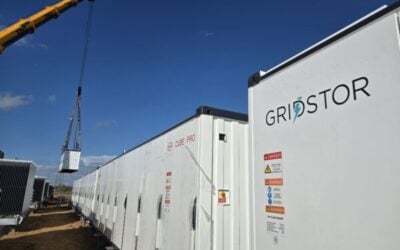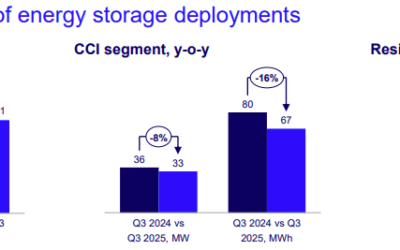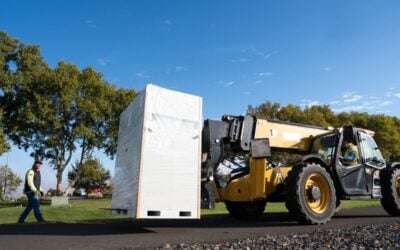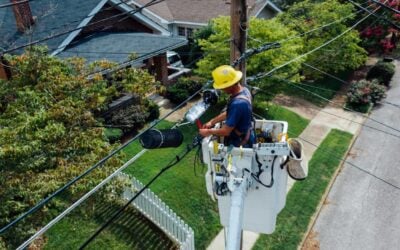Anahola solar PV plant, Kaua’i, Hawaii. The state has necessary and ambitious renewable energy targets in place and is increasingly seeing storage as an enabler of this goal. Image: REC Solar.
A large-scale energy storage system aimed at integrating renewables into electricity networks has been completed on the Hawaiian island of Kaua’i, paired with the state’s biggest PV array to date.
US installer REC Solar has connected the 12MW (14.5MW DC) solar PV installation, which combines with a grid-scale battery storage system supplied by French maker Saft. The project, which PV Tech Storage first reported on back in July 2014 when it was announced, utilises eight of Saft’s containerised ‘Intensium Max 20 M’ li-ion units.
The system, in Anahola, will provide up to 20% of the island’s power during daylight hours, or 5% of its overall annual energy needs.
Hawaii is aiming to meet 100% of its energy needs from renewables by 2045, but has already begun to experience the negative impacts of having large levels of renewable capacity connected to the grid.
Try Premium for just $1
- Full premium access for the first month at only $1
- Converts to an annual rate after 30 days unless cancelled
- Cancel anytime during the trial period
Premium Benefits
- Expert industry analysis and interviews
- Digital access to PV Tech Power journal
- Exclusive event discounts
Or get the full Premium subscription right away
Or continue reading this article for free
Because of the state’s grid constraints, the Kaua’i plant is coupled to the lithium-ion battery system, which is designed to smooth the integration of the solar power on the grid.
David Bissell, chief executive of Kaua‘i Island Utility Cooperative (KIUC), REC Solar’s client in the project, said: “This project represents a huge step toward achieving our goal of using renewable resources to generate at least half of Kauai’s power needs by 2023. Every megawatt we can generate using the power of the sun reduces our costs and our greenhouse gas emissions.”
Hawaii at ‘forefront of electric grid transformation’
As a group of islands, Hawaii is forced to import fossil fuels at great cost, while it simultaneously has ample solar resources that it could capitalise on instead. However, the high penetration of renewables on Hawaii has forced the state to turn to storage, with Hawaii Electric Company (HECO) and KIUC both issuing requests for proposals for over 200MW of energy storage capacity in the past year. As a consequence the state is seen as something of a testing ground for new storage technologies.
PV Tech Storage reported in September that US installer SolarCity will build a 13MW PV plant on Kaua’i, which would leapfrog Anahola as Hawaii’s biggest solar array and will also be connected to grid-scale battery storage. That plant will use a vast amount of storage capacity, 52MWh, to ‘time-shift’ solar power for evening use.
Meanwhile, commercial energy storage provider Stem deployed its first project in Hawaii recently as a pilot. The system will not only help Stem’s customers reduce their energy bills by mitigating demand charges, but will at the same time benefit the grid, smoothing solar output but also making spare battery capacity available to the grid operator to use for providing grid services.
Storage is also seen as a key solution to the future deployment of PV at a smaller scale in Hawaii. Last month Hawaii’s public utilities commission announced the closure of the island state’s net metering programme due to the increasing pressures placed on the grid by distributed solar. One of the proposed replacement tariffs, a “self-supply” option, would reward customers looking to consume their own solar power, most likely in combination with a storage unit.
“Hawaii is at the forefront of the electric grid transformation and solar energy is in the driver’s seat,” said Al Bucknam, REC Solar’s CEO. “REC has invested in understanding Hawaii’s unique market because we know commercial and utility-scale solar is an integral part of Hawaii’s ambitious 100 percent renewables goal.”
Model of Saft Intensium containerised storage system. Image: Andy Colthorpe.





